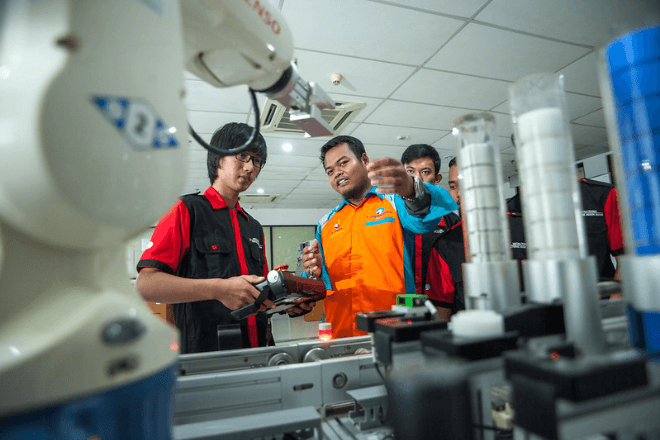
Research shows businesses that are skilled in disruptive technologies are likely to recover faster from the coronavirus disease (COVID-19) pandemic and become more resilient.
A recent study from the Asian Development Bank (ADB) looks at the transformational impact of fourth industrial revolution (4IR) technologies on skills and jobs in selected Southeast Asian countries.
4IR refers to a range of new technologies that fuse the physical, digital, and biological worlds. It includes Internet of Things (IoT), artificial intelligence (AI), cloud computing, and cognitive computing.
There is growing concern that these disruptive technologies could displace many workers by replacing them with automation or by running their employers out of business.
Increased labor demand
Based on employer surveys in selected industries, the ADB study sees large potential returns to businesses arising from productivity increases from 4IR technologies, creating more labor demand. By 2030, more jobs will be created in these industries than displaced.
For example, in Indonesia, this means a net job creation of 41% for food and beverage (F&B) and 30% for automotive manufacturing industries. In the Philippines, 4IR technologies could result in net job increases of 11% for information technology-based business process outsourcing (IT-BPO).
At least half of the employers surveyed in the Philippines have adopted 4IR technologies into their operations. In the IT-BPO and electronics industries, 63% and 55% of employers surveyed expect to see productivity improvements of more than 25% by 2025 from adoption of 4IR technologies.
The ADB study examined industries that are both important for growth, employment, international competitiveness, and 4IR. Employers in all industries surveyed stressed the importance of skills in the context of disruptive technologies. Together, they could need an additional 169 million people trained by 2030 to prepare for the transition to 4IR.
Six policy recommendations
The report provides six policy recommendations to better prepare businesses and their workers for 4IR:
- Develop 4IR transformation road maps for key sectors. Industry transformation maps may be used to provide information on technology impacts, career pathways, the skills required for different occupations, and reskilling options for different sectors.
- Develop industry-led TVET programs targeting skills for 4IR. The study calls for dedicated 4IR technical and vocational education and training (TVET) programs in in close collaboration with the target industry. With several Indonesian training institutions initiating courses for 4IR, the study recommends revisiting quality assurance mechanisms, particularly to address the quality of “training of trainer” programs and strengthening industry partnerships and flexible certification programs.
- Upgrade training delivery through 4IR technology in classrooms and training facilities. The survey of training institutions revealed limited use of advanced technologies. According to the study, only 15% of surveyed training institutions in the Philippines reported using virtual platforms for training. In Indonesia,19% of training institutions use online platforms for training while 16% use augmented reality and virtual reality tools.
- Develop flexible and modular skills certification programs. These skills certification programs should recognize skills attainment even outside traditional education channels. The study cites the Malaysian Skills Certification Program, which grants certificates to those with no formal educational qualifications but who gained knowledge and skills at work.
- Formulate new approaches and measures to strengthen inclusion and social protection under 4IR. Use digital platforms, such as massive open online courses, and industry-recognized certification to train workers at the entry level, those at risk of losing their jobs, and those who need upskilling. The study shows mismatches between training institutions and employers on the perceived readiness of graduates for the workplace. According to IT-BPO employers in the Philippines, manual and administrative jobs which are typically held by women, are likely to see the largest losses.
- Implement an incentive scheme for firms to train employees for 4IR. To ensure the welfare of workers, the study calls for a strong focus on reskilling and upskilling programs, and incentives schemes for employers to retrain workers. The Career-Up Josei-Kin program in Japan, which subsidizes employers to train individuals not on regular contracts is identified as a good example.
In addition, the study recommends supporting 4IR knowledge transfer from large multinational companies to micro, small, and medium-sized enterprises.
As 4IR technologies spread rapidly, extensive investments in digital skills will improve the chances of the young and old to access higher-quality jobs and lower the risk of job losses,” said ADB Principal Education Specialist Shanti Jagannathan. “Now is the time to rethink delivery of skills using virtual platforms and mobile technologies, and to develop agile training institutions with courses and credentials that match market needs.”
This article was first published by BIMP-EAGA on 13 April 2021.

